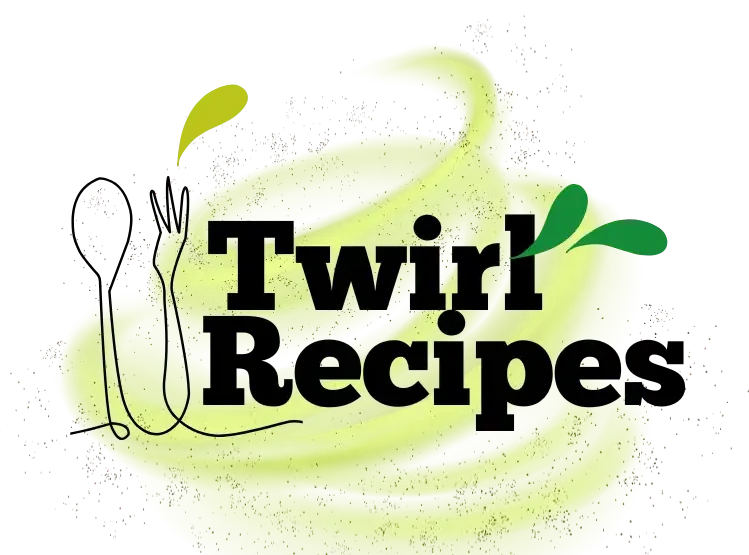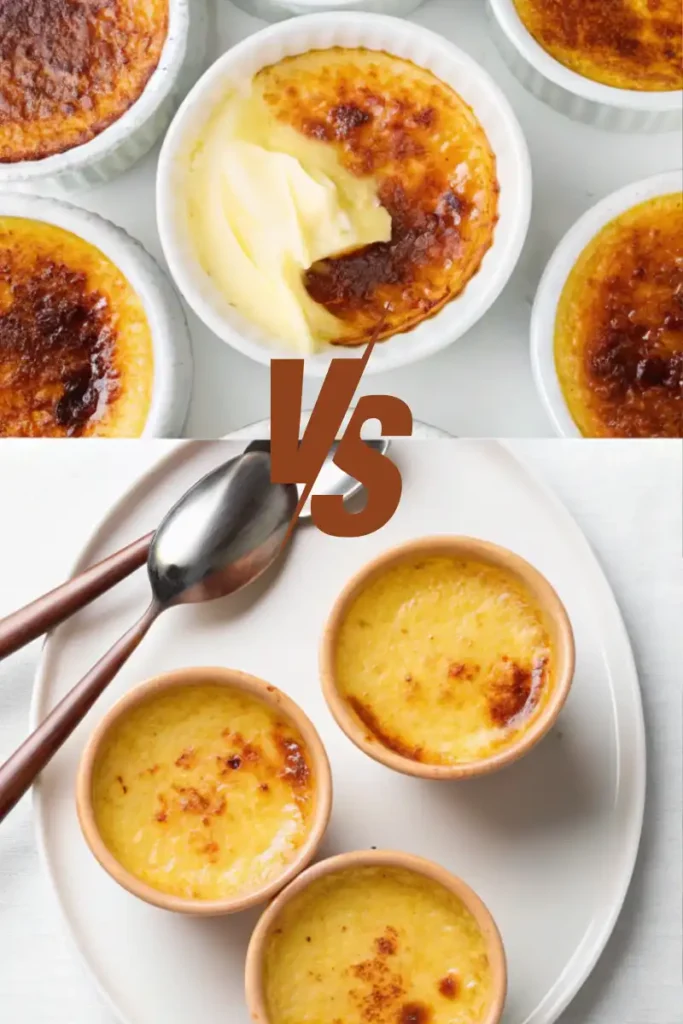Do you remember that magical moment when you cracked through the glassy caramelized sugar of a perfect crème brûlée? The difference between crème brûlée and custard is more than just a culinary technicality. It’s an experience that tantalizes your taste buds and sparks culinary curiosity.
As a dessert enthusiast, you’ve likely encountered both these creamy delights. You might have wondered about their unique characteristics. The comparison between crème brûlée and custard reveals a fascinating world of texture, technique, and tradition.
Understanding the nuanced difference between crème brûlée and custard isn’t just about ingredients. It’s about appreciating the rich culinary heritage that makes each dessert special. From the signature caramelized top of crème brûlée to the silky smooth variations of custard, these desserts represent more than just a sweet ending to a meal.
JUMP TO
Understanding Crème Brûlée
Explore the world of a classic French dessert that has won hearts for centuries. Crème brûlée is more than a sweet treat. It’s a culinary journey that mixes rich flavors with unique textures.
What is Crème Brûlée?
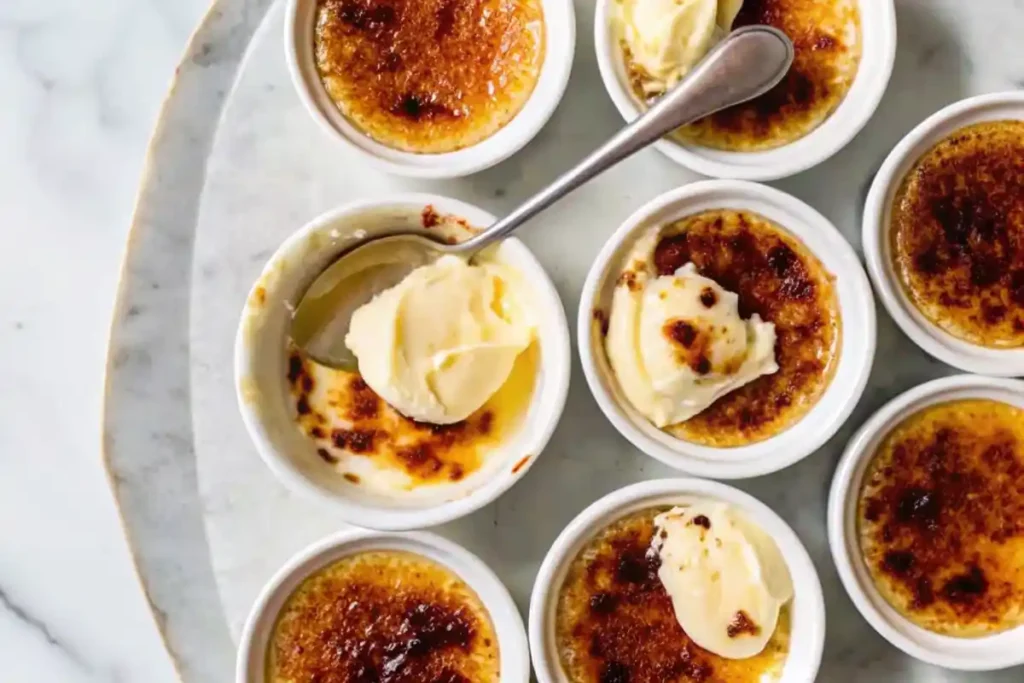
Crème brûlée is a luxurious dessert with a silky custard base and a crisp caramelized sugar top. The name means “burnt cream” in French, fitting its signature crackling top. When you crack through the sugar, you find a smooth, creamy custard underneath.
The History of Crème Brûlée
The origins of this dessert are a mystery. Some say it came from France, England, or Spain. The first mention is in a 1691 cookbook by François Massialot. In the 1980s and 1990s, it became popular in top US restaurants.
Key Ingredients in Crème Brûlée
A great crème brûlée recipe needs a few key ingredients:
- Heavy cream (1 1/2 cups)
- Whole milk (1/2 cup)
- Egg yolks (6 large)
- Granulated sugar (3/4 cup)
- Vanilla extract
The secret to crème brûlée is in how these ingredients are mixed. Egg yolks make it silky, while cream makes it rich. Sugar turns golden and crisp when caramelized with a kitchen torch.
Pro tip: The best crème brûlée has a satisfying crack when tapped with a spoon. Celebrate National Crème Brûlée Day on July 27th!
What is Custard?
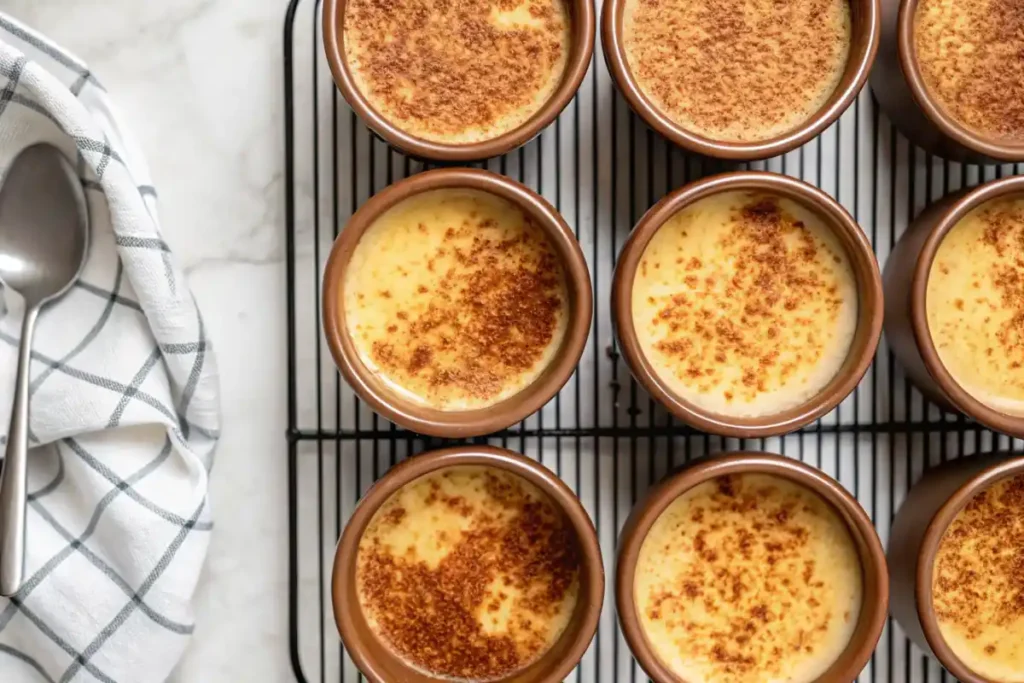
Custard is a sweet treat loved by many. It’s not just a dessert; it’s a versatile ingredient. It can make simple dishes into something special.
A custard recipe needs a few key ingredients for its smooth texture. These include:
- Milk or cream
- Egg yolks
- Sugar
- Flavoring (like vanilla)
Types of Custard
There are many types of custard, showing its versatility:
- Baked Custard: Made in the oven, like traditional flan
- Stirred Custard: Mixed constantly while cooking
- Set Custard: Becomes firm after chilling
History of Custard
Custard has a rich history across cultures. European chefs first used it in fancy desserts. Asian cuisines, like silky egg tarts, added their own twist.
Common Uses for Custard
Custard is more than just a dessert. It’s a base for pies, tarts, fillings, and sauces. It’s perfect for quick desserts or gourmet meals, opening up endless creative possibilities.
Top Differences Between Crème Brûlée and Custard
1- Texture Differences
Explore the world of dessert textures with crème brûlée and custard. Each has its own special touch. Knowing the differences can make you appreciate desserts more.
How Crème Brûlée Achieves Its Unique Texture
Making crème brûlée just right is an art. Chefs use:
- Egg yolks for extra richness
- Careful temperature control
- A water bath during baking
- Precise caramelization techniques
The Creaminess of Custard
Custard textures vary, giving different tastes. You can have a smooth, silky flan or a thick pastry cream. Custard can be:
- Baked and firm
- Stirred and pourable
- Set with a gelatin-like wobble
Crème brûlée is all about a dense, rich custard. But custards can be more flexible in texture and taste.
2- Flavor Variations
Dessert lovers rejoice! The world of crème brûlée flavors and custard flavors is a playground for your taste buds. These classic desserts offer endless opportunities for creativity and exploration.
Chefs have created amazing variations of crème brûlée, beyond the traditional vanilla. You’ll find a range of flavors that turn this classic into a gourmet treat.
Popular Crème Brûlée Flavor Innovations
- White chocolate and raspberry
- Lavender-infused
- Butterscotch
- Blueberry cheesecake
- Vanilla lemongrass
Seasonal ingredients are key in expanding crème brûlée flavors. Chefs use fresh produce like rhubarb, blackberries, and strawberries. This creates unique tastes that celebrate local harvests.
Exploring Custard Flavor Profiles
Custard flavors are very versatile. While vanilla is classic, modern techniques allow for exciting mixes. Fruit purees and liqueur-infused custards offer a wide range of tastes.
- Classic vanilla
- Citrus-infused
- Chocolate
- Caramel
- Spiced versions with cinnamon or nutmeg
Whether you like traditional or adventurous flavors, both crème brûlée and custard are great for exploring. The secret is to use high-quality ingredients and let your imagination guide you.
3- Cooking Techniques
Preparing the Perfect Crème Brûlée
Start with top-notch ingredients for crème brûlée. Heavy cream with 36% fat is key for a rich base. Here are important steps:
- Use fresh egg yolks with 16% protein
- Choose vanilla beans or quality extract
- Select four to six 7-ounce ramekins for individual servings
Cooking Custard: Professional Techniques
Cooking custard needs careful temperature control and gentle handling. The method changes based on the custard type:
- Baked custards: Cook at 325ºF (163ºC) for 30-40 minutes
- Stovetop custards: Stir constantly to avoid curdling
- Chilled custards: Refrigerate for at least 3 hours before serving
For both desserts, temperature management is key. Let them cool to room temperature. This prevents condensation and ensures the best texture.
Final Touches and Presentation
The caramelized sugar topping is crème brûlée’s signature. Use a culinary torch from 3-4 inches away. Sprinkle just one teaspoon of sugar for a delicate, crisp crust.
4- Nutritional Comparison
Exploring crème brûlée and custard nutrition reveals interesting differences. These tasty desserts may look alike, but their nutritional values are quite different.
Caloric Content Breakdown
- Crème brûlée has 300-400 calories per serving
- Custard has 150-200 calories per serving
- Calories vary based on ingredients and how it’s made
Ingredients Impacting Nutritional Value
The nutritional value of these desserts changes with their main ingredients. Crème brûlée’s nutrition is mostly affected by:
- Heavy cream base
- Caramelized sugar topping
- Egg yolk concentration
Custard nutrition is more adaptable. You can make it lighter by:
- Choosing lower-fat milk
- Using different sweeteners
- Controlling portion sizes
Egg yolks and sugar are key in both desserts’ fat and sugar content. Crème brûlée is richer, but custard is a better
Presentation and Serving Styles
Dessert presentation turns a simple treat into a special experience. Crème brûlée and custard serving ideas add a touch of elegance to your dining. They make your guests feel special and enhance your meal.
Serving Crème Brûlée with Elegance
Crème brûlée needs a fancy way to be served. It’s traditionally served in individual ramekins, showing off its delicate taste. To make your crème brûlée stand out, follow these steps:
- Choose white ceramic ramekins for a classic look
- Caramelize sugar right before serving to keep the top crunchy
- Add fresh berries or mint leaves for garnish
- Lightly dust with powdered sugar for extra flair
Creative Custard Serving Ideas
Custard is great for many different occasions. It can be as fancy as a dinner party or as casual as a get-together. Here are some ideas to wow your guests:
- Invert baked custards like flan onto fancy plates
- Use it as a sauce for cakes or fruit desserts
- Make layered parfaits with fruit and custard
- Serve in shot glasses for a modern twist
Whether you pick the fancy crème brûlée or the versatile custard, your dessert will be unforgettable. It turns a simple sweet into a memorable moment.
Variations of Crème Brûlée and Custard
Exploring crème brûlée variations opens up a world of culinary creativity. The classic recipe is loved, but chefs have made it a canvas for exciting flavors and techniques.
Creative Twists on the Classic Recipe
Crème brûlée variations have become a playground for culinary imagination. You’ll discover unexpected flavor combinations that elevate the traditional dessert:
- Espresso-infused crème brûlée with a rich coffee undertone
- Delicate lavender crème brûlée with floral notes
- Exotic matcha green tea crème brûlée
- Seasonal pumpkin spice crème brûlée for fall
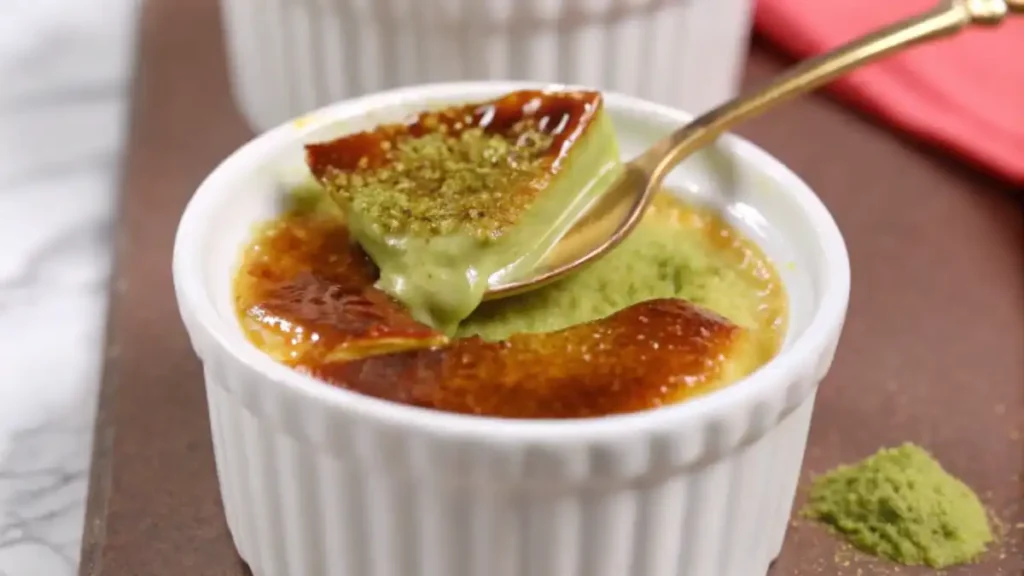
Regional Custard Variations
Custard variations showcase the dessert’s incredible versatility across different culinary traditions. From around the world, you’ll find unique interpretations that highlight local flavors:
- Japanese purin (custard pudding)
- Portuguese pastel de nata
- Italian panna cotta
- Southern United States’ banana pudding
These crème brûlée and custard variations show how a simple dessert can be transformed. Whether you like traditional recipes or adventurous flavors, there’s something for everyone.
Popular Pairings
Exploring the best crème brûlée and custard pairings can make your dessert experience amazing. These treats offer many flavor combinations that excite your taste buds.
Crème Brûlée Companions
Here are some tasty options for crème brûlée pairings:
- Fresh berries for a tart contrast
- Dessert wines like Sauternes
- Late-harvest Riesling
- Espresso or strong coffee
Exploring Custard Pairings
Custard pairings have many flavor options. Different custards go well with unique accompaniments:
- Fruit compotes for classic custards
- Raspberries with chocolate custards
- Whipped cream as a light topping
- Trifle with integrated flavor layers
Creating the Perfect Dessert Plate
Combining crème brûlée and custard on one plate can impress. The trick is to mix textures and flavors for a memorable taste experience.
Final Thoughts on Crème Brûlée vs. Custard
Exploring desserts like crème brûlée and custard is a joy. They each have their own special qualities. It’s not just about taste; it’s about the traditions and techniques behind them.
Embracing Both Desserts
Both desserts have something unique to offer. Crème brûlée is rich and luxurious, with a caramelized top and creamy base. Custard, on the other hand, is versatile and comforting. It’s important to try them both and appreciate their differences.
Finding Your Personal Favorite
Your favorite dessert is a personal choice. Some might enjoy crème brûlée’s crunchy top, while others prefer custard’s smoothness. Crème brûlée has about 250 calories per 100g, and custard has 160. Trying different recipes can deepen your love for these desserts.
Enjoying both crème brûlée and custard is key. Your journey is about exploring, tasting, and creating unforgettable dessert moments. It’s about making your taste buds happy and your heart warm.
Frequently Asked Questions
What is the English version of crème brûlée?
The English version of crème brûlée is often referred to simply as “burnt cream.” This name directly translates its French meaning. Another similar dessert in English history is “Trinity Cream,” served at Trinity College, Cambridge, which also features a caramelized sugar topping.
What are the three types of custard?
– Baked Custard: Thick and firm, this custard is often used in pies or served as standalone desserts like flan or crème caramel.
– Stirred Custard: Cooked on the stovetop, this custard remains pourable and is commonly used as a sauce (e.g., crème anglaise) or base for trifles.
– Steamed Custard: Popular in Asian cuisines, steamed custards are delicate and silky, often served in savory or sweet variations.
Is crème brûlée basically pudding?
Not quite. While crème brûlée and pudding share a creamy texture, they are different desserts. Crème brûlée is a type of custard that uses eggs to thicken the mixture, giving it a richer, more luxurious texture. Pudding, on the other hand, is typically thickened with cornstarch or gelatin, resulting in a lighter, more uniform consistency. The caramelized sugar topping also makes crème brûlée distinct.
Which is healthier: crème brûlée or custard?
Both are indulgent desserts, so they should be enjoyed in moderation. However, custard may be a slightly lighter option since it typically contains milk instead of heavy cream. If you’re looking for a healthier twist, try reducing sugar or using plant-based alternatives.
